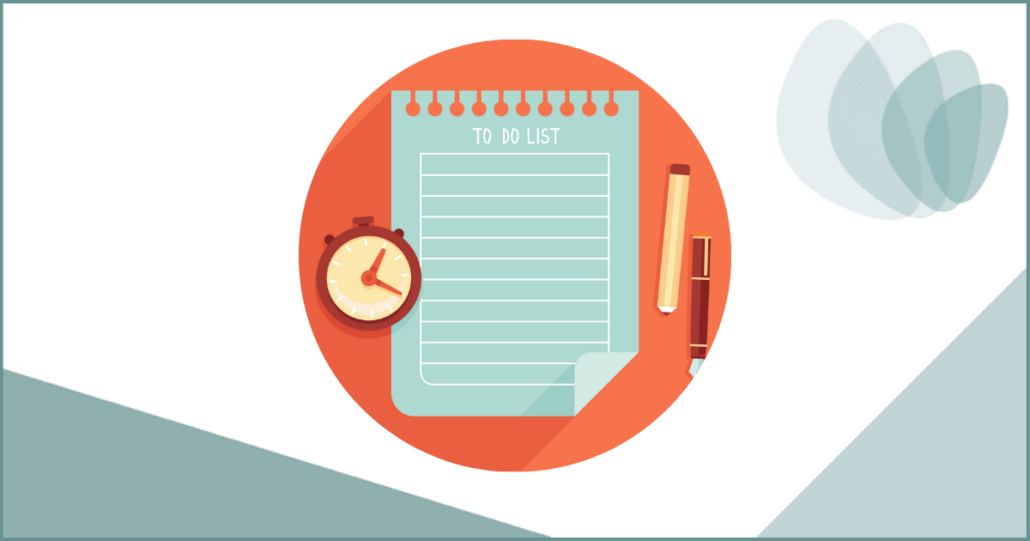Happy UN Career Podcast / Episode 22
3 Keys to a To-Do List that Helps Your UN Career
Episode 22 / 24 August 2021
SHOW NOTES
Hello, and welcome to this 4th episode in a small series I’ve called: “Plan and Succeed”.
Previously in this series, I’ve talked about effective planning principles, goalsetting and the underrated importance of having an overview.
All of these things are of course interlinked and influence each other, but in this small series, I’m trying to take them apart a bit so that you can apply them more easily in your own work and life.
So today I’ll introduce a very concrete element of your daily planning.
Feeling happy in your UN career certainly has a lot to do with for example having interesting work and good relationships with peers and supervisors.
But a very fundamental requirement for happiness at work – which I think that both organisations and individuals overlook – is to feel that you’re in control of your work and can manage it with the time you have.
I’ve worked with several clients who felt stressed out and frustrated with their work when we started working together. They were wondering whether their job was still right for them and whether maybe they should find something else altogether.
But after working very consistently on creating an overview, establishing realism and solid prioritizations in their work they found out that in fact – that they still liked their work!
They’d just lost overview and control which led to overwhelm and stress. (And I know from my own personal experience that it’s difficult to be happy at work when you’re stressed.)
But with that control re-established with effective planning tools that suited them their individual jobs and personalities, they came back and told me that they had regained their confidence and liked their job again. To their joy and relief!
Get an Overview!
In episode 19, I talked at some length about why you need to start by creating an overview for any kind of planning or effort to make time for important actions. If you haven’t already, I suggest you go back and listen to that episode which can find here.
Without an overview, it’s like you’re standing in the valley looking up on the mountain. It’s very difficult to see what’s the best way to the top – or to find the easiest way to the valley on the other side.
But if you can get an overview with a map, then you can plan the best path for yourself.
Create Control of Your Work
A key element of feeling happy with your work is to feel in control of your work. To know that you are in control of your time and your tasks – instead of you being controlled by work.
And one simple tool but very effective tool to help you with this is an effective to-do list.
Now, I can almost hear some of you say. “A to-do list? Barbara, I have a to-do -list – and it just makes me feel overwhelmed!”
Well, in my experience, there are some key elements that most people are missing when writing their to-do lists. And that’s exactly when it can lead to overwhelm instead of clarity of mind.
3 Common Mistakes that Make Your To-Do List Ineffective
- A lot of people think they’re creating a to-do list, but in reality, they depend on their memory for many of their tasks and only write down some of them.In that way, you use a lot of energy trying to remember things. In fact, much more brainpower than you realise and that’s brainpower you need to do your work – instead of thinking about what is the next task.
And when you can’t see everything together on your list, you’re missing the overview that I keep talking about.
- Another thing missing from most people’s to-do list is awareness of time. Something as simple as thinking through how much time you need for each task.How can you realistically plan your day if you don’t know how much time you need to complete each of your tasks? Whether it’s:
- Checking your email
- Preparing for meetings
- Following up after meetings
- Doing research
- Finalising that critical report – or whatever your important tasks are.
- The last critical element that is often missing is prioritisation! Most to-do lists people show me are very long (including many more tasks than they can realistically do in a workday). And tasks have just been written down in the order they sprang into mind.
The problem is that if you can’t see everything written down in one place it’s almost impossible to get an overview of what’s on your plate. And when you don’t have an overview of everything on your plate, it’s very difficult to make a good plan.
Instead, it’s very easy to get overwhelmed.
Have you ever started your workday by checking your emails? You know – just to get an overview?
And then one hour later you discover that you’re still firmly planted in your inbox… (That is if you haven’t been called away by a meeting of course.)
And you haven’t yet touched that important task you had promised yourself you would finalize as the first thing today.
Or maybe your inbox is so overflowing that you feel completely overwhelmed and it’s impossible to really determine which is the most important email to start with?
So, you just start responding from the top of the inbox in order to at least do something.
That gives you a feeling that you’re at least doing something. But you’re also aware that you may not really be working on the most important stuff! Which can give you that stressful feeling of a knot in your stomach…
To avoid all this, you need a realistic and well-prioritised to-do list, that clearly shows you where to start and allows you the satisfaction of ticking off your important tasks right from the beginning of the day.
3 Keys to an Effective To Do-list that Will Help You in Your UN Career
Here’s the recipe for how you can improve your to-do list dramatically and boost your effectiveness and job satisfaction in the same go:
- Write every task down
Whether you use a paper pad, an Excel sheet or an app on your phone doesn’t matter. As long as it’s easy for you to get access to and use.
Make sure that everything you’re going to spend time on is on the list. I suggest that this includes preparation time for meetings, time to get from one location to the next, email time, etc.
Now you have a true overview of your day and then you can make realistic planning. - Estimate your time
Then you estimate how much time you need for each of your tasks and write it next to the task on your list. Whether it’s 10 minutes or an hour.
When you’ve done that for all your tasks, you of course want to make a total – to see how realistic your plan is. Remember to also include time for lunch and other breaks, the unexpected questions from colleagues, etc. - Make prioritisations
Now you prioritise each of the tasks on your to-do list.
Even if prioritisation can be challenging, some of the tasks are bound to be more important than others.
It’s essential that you are very clear on what these are and make sure you prioritise them first (so you don’t end up checking emails all morning instead of attacking that one more important thing).
Put your list in priority order, so you know that you start with the most important task first.
Now, enjoy the feeling of a good plan and a clear overview of your day!
There are some common pitfalls where you may struggle or drop your to-do list, so here are some tips for how to deal with those.
- If you’re suffering from complete overwhelm and clearly have too much on your plate, then not all the lists in the world can solve that.There are only 24 hours in a day and if your workload is impossible, good planning will not be able to solve that problem.
But being able to create that overview and prioritization will create a much better basis for your conversation with your supervisor about workload issues and the prioritizations both of you need to make.
- Sometimes you fall off the horse – that happens to all of us.For example, after a vacation, you may slip from the good habits you created beforehand. Instead, try to foresee that that can happen.
Create a habit that you set in motion already before the vacation: create reminders and block time in your calendar so that you start on the first day after your vacation by creating your to-do list and your overview.
- You’re very busy one day and you skip writing your list for tomorrow.
I have to admit that even with all my years of experience that can still happen for me.But a few hours into the day I realise that my day feels like it’s going nowhere and I’m doing a bit here and a bit there. Which unfortunately always puts me in a bad mood.
However, once I then stop what I’m doing and instead create my to-do list for the day with time estimate and prioritisation, my work picks up again. And I advise you to do the same.
It’s never too late to make your to-do list!
Make Your Own To-Do List!
When you have an effective to-do list you look much more forward to your day and feel happier at the end of it. So, I really encourage you to try it out.
Do it for tomorrow already.
Or today!




